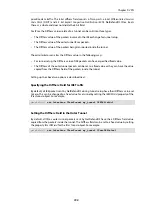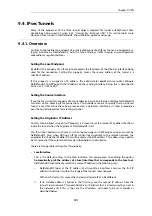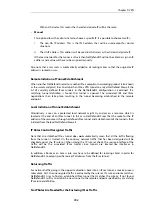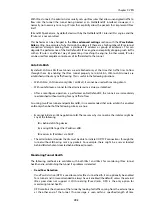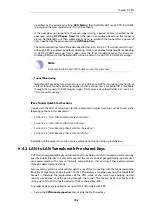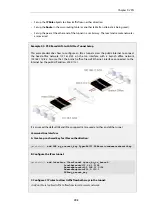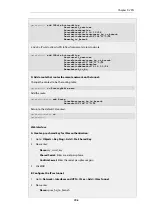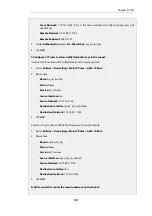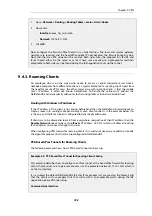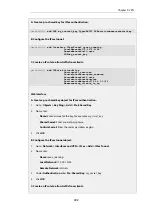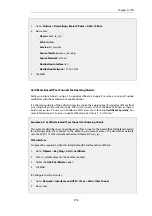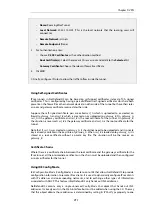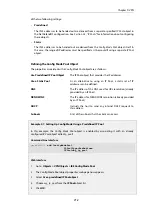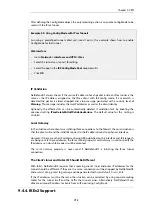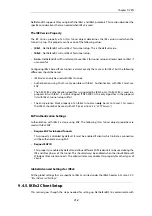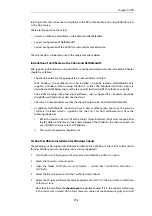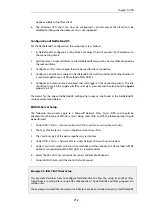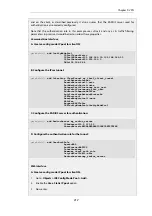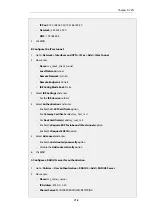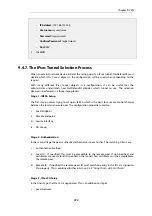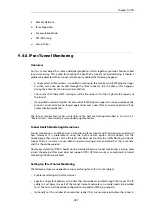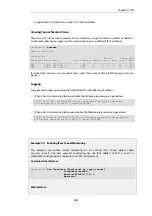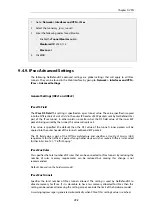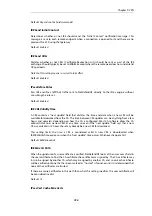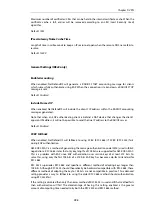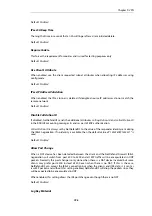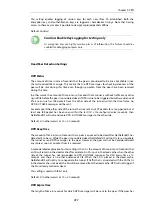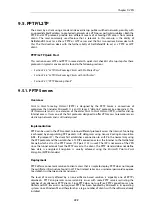
NetDefendOS supports IPsec using both the IKEv1 and IKEv2 protocols. This section describes the
specific considerations that are needed when IKEv2 is used.
The IKE Version Property
The
IKE Version
property of an
IPsec Tunnel
object determines the IKE version used when the
tunnel is set up. This property can have one of the following values:
•
IKEv1 - NetDefendOS will use IKEv1 for tunnel setup. This is the default value.
•
IKEv2 - NetDefendOS will use IKEv2 for tunnel setup.
•
Auto - NetDefendOS will first attempt to use IKEv2 for tunnel setup and revert back to IKEv1 if
unsuccessful.
Configuring IKEv2 based IPsec tunnels is almost exactly the same as for IKEv1 but the following
differences should be noted:
•
IKE Mode
can only be used with IKEv1 tunnels.
•
Authentication using
XAuth
is only possible with IKEv1. Authentication with IKEv2 must use
EAP.
•
The AES-XCBC authentication algorithm is supported by IKEv2 only. If AES-XCBC is used in a
proposal list with IKEv1, it will be skipped. If AES-XCBC is the only algorithm in the proposal
list with IKEv1, tunnel setup will fail.
•
The
Encapsulation Mode
property of an IKEv2 tunnel can only be set to
Tunnel
. This means
that IKEv2 should not be used with L2TP (see
EAP Authentication Settings
Authentication with IKEv2 is done using EAP. The following
IPsec Tunnel
object properties are
used with IKv2 EAP:
•
Require EAP for Inbound Tunnels
This property is disabled by default. It must be enabled if clients which initiate a connection
will be authenticated using EAP.
•
Request EAP ID
This property is enabled by default and allows different EAP credentials to be used during the
IKE and IPsec phases of the tunnel. This should always be enabled when the inbuilt Microsoft
WIndows IPsec client connects. The administrator may disable this property for other types of
clients.
Global Advanced Settings for IKEv2
All the global settings that are specific to IKEv2 are listed under the IKEv2 header in
9.4.5. IKEv2 Client Setup
This section goes though the steps needed for setting up NetDefendOS to communicate with
Chapter 9: VPN
714
Содержание NetDefendOS
Страница 30: ...Figure 1 3 Packet Flow Schematic Part III Chapter 1 NetDefendOS Overview 30 ...
Страница 32: ...Chapter 1 NetDefendOS Overview 32 ...
Страница 144: ...Chapter 2 Management and Maintenance 144 ...
Страница 220: ... Enable DHCP passthrough Enable L2 passthrough for non IP protocols 4 Click OK Chapter 3 Fundamentals 220 ...
Страница 267: ... SourceNetwork lannet DestinationInterface any DestinationNetwork all nets 4 Click OK Chapter 3 Fundamentals 267 ...
Страница 284: ...Chapter 3 Fundamentals 284 ...
Страница 360: ...The ospf command options are fully described in the separate NetDefendOS CLI Reference Guide Chapter 4 Routing 360 ...
Страница 392: ...Chapter 4 Routing 392 ...
Страница 396: ...Web Interface 1 Go to Network Ethernet If1 2 Select Enable DHCP 3 Click OK Chapter 5 DHCP Services 396 ...
Страница 419: ... Host 2001 DB8 1 MAC 00 90 12 13 14 15 5 Click OK Chapter 5 DHCP Services 419 ...
Страница 420: ...Chapter 5 DHCP Services 420 ...
Страница 424: ...2 Now enter Name lan_Access Action Expect Interface lan Network lannet 3 Click OK Chapter 6 Security Mechanisms 424 ...
Страница 573: ...Chapter 6 Security Mechanisms 573 ...
Страница 575: ...This section describes and provides examples of configuring NAT and SAT rules Chapter 7 Address Translation 575 ...
Страница 607: ...Chapter 7 Address Translation 607 ...
Страница 666: ...Chapter 8 User Authentication 666 ...
Страница 775: ...Chapter 9 VPN 775 ...
Страница 819: ...Chapter 10 Traffic Management 819 ...
Страница 842: ...Chapter 11 High Availability 842 ...
Страница 866: ...Default Enabled Chapter 13 Advanced Settings 866 ...
Страница 879: ...Chapter 13 Advanced Settings 879 ...

